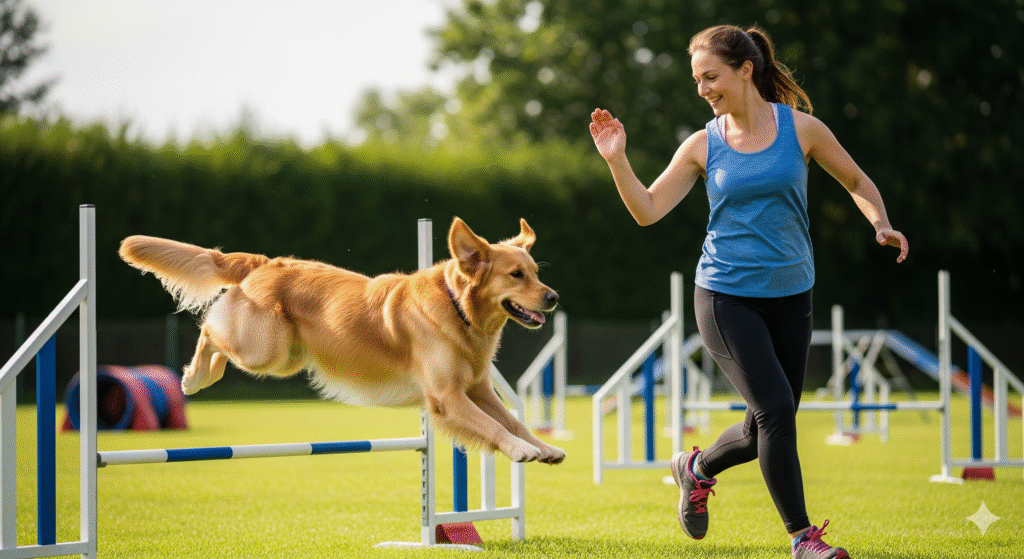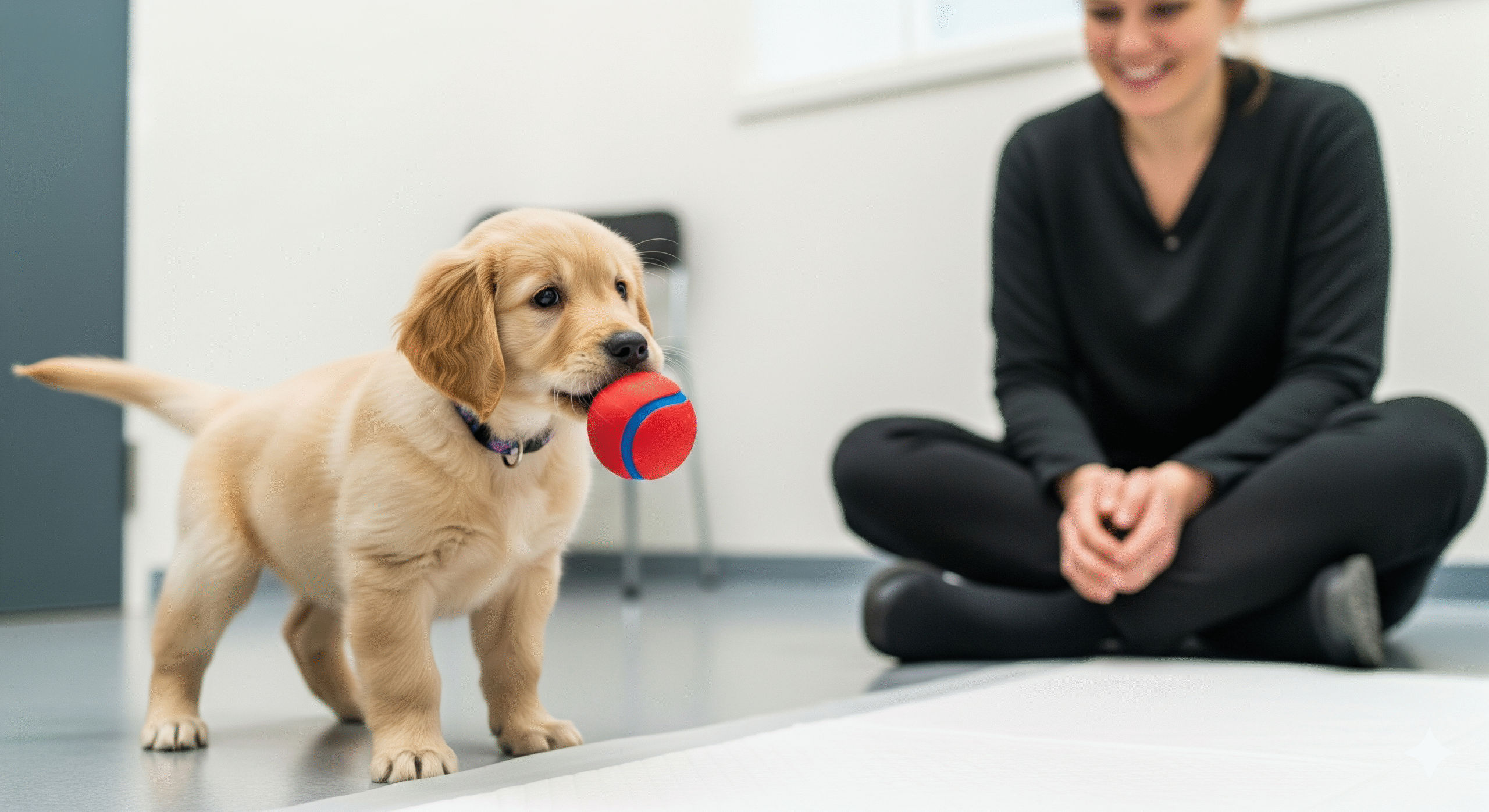Walking into a litter of bouncing, wiggling puppies is an exercise in overwhelming cuteness. But how do you look beyond the adorable faces and choose the puppy whose innate personality best fits your lifestyle, experience, and family? A puppy temperament test is a structured way to observe a puppy’s natural reactions to various stimuli, giving you invaluable insight into their core personality before you make a 10-15 year commitment. This isn’t about finding a “good” or “bad” puppy; it’s about finding the right puppy for you.
Whether you’re at a breeder’s home or a shelter, knowing what to look for can prevent heartbreaking mismatches. An energetic, strong-willed puppy might be a dream for an avid runner but a nightmare for a quiet apartment dweller. This guide will teach you how to become a savvy puppy personality detective.
Here’s what we’ll cover:
✔️ What a temperament test is (and what it isn’t)
✔️ The most common and reliable tests used by breeders and shelters
✔️ How to interpret the results: confidence vs. fear, energy level, and independence
✔️ A step-by-step guide to performing your own simple assessments
✔️ How to match different temperaments to different homes and lifestyles
✔️ The limitations of testing and why it’s just one piece of the puzzle
Let’s find the puppy whose personality will seamlessly blend into your life.
What is a Puppy Temperament Test? 🧐
A temperament test is a series of simple, standardized exercises designed to provoke a puppy’s natural, instinctual responses. The goal is to see their raw, unlearned personality before extensive training and environment shape them.
What a Temperament Test IS:
- A snapshot of their innate tendencies.
- A tool to gauge confidence, curiosity, and resilience.
- A way to assess their energy level and social attraction to people.
What a Temperament Test IS NOT:
- A crystal ball that predicts their future with 100% accuracy.
- A measure of intelligence or trainability.
- A pass/fail exam. There are no wrong answers, only different fits.
When and How to Test: The Ideal Scenario ⏰
- Ideal Age: The best time to test is between 7 and 8 weeks of age. By this age, puppies have developed distinct personalities but are still largely uninfluenced by outside training.
- The Environment: Testing must be done in a quiet, unfamiliar space with minimal distractions. The tester should be a stranger to the puppies to get the most accurate reading.
- One at a Time: Each puppy must be tested individually, away from its littermates.
Key Traits Assessed in a Temperament Test 🔍
Most tests evaluate these five core dimensions:
- Social Attraction: The puppy’s desire to be with people. Does it follow willingly? Is it independent?
- Following/Willingness: The puppy’s desire to follow a human leader, not its own will.
- Restraint/Dominance: How the puppy reacts to a mildly dominant, restrictive hold. Does it struggle, settle, or accept it?
- Social Dominance: The degree to which the puppy will accept a human as being in charge.
- Energy Level & Recovery: How quickly the puppy recovers from a startling event and returns to a calm state.
The Volhard Puppy Aptitude Test (PAT)
This is one of the most well-known and widely used systems. It consists of 10 subtests. Here are a few key examples:
1. Social Attraction 🧍♂️
- Test: Place the puppy in the test area. Crouch down and gently call them over. Clap your hands softly.
- What to Look For:
- Confident/Outgoing: Comes readily, tail up, jumps, bites at hands.
- Independent: Comes readily, tail up, licks hands.
- Aloof: Comes reluctantly, tail down.
- Fearful: Does not come at all; hides.
2. Following 🚶♂️
- Test: Walk away from the puppy in a normal gait.
- What to Look For:
- Following readily: Tail up, gets underfoot, nips at feet. (High energy)
- Following readily: Tail up, gets underfoot, no nipping.
- Following reluctantly: Tail down, follows at a distance.
- No following: Goes its own way or hides.
3. Restraint 👐
- Test: Gently roll the puppy on its back and hold it there for 30 seconds with one hand on its chest.
- What to Look For:
- Struggles fiercely: Flails, bites, and never settles. (Very dominant, may be a handful)
- Struggles, then settles: Fights initially but then calms down. (Good balance)
- No struggle: Wiggles, licks hands. (Submissive, easy-going)
- No struggle, frozen: Doesn’t move, is stiff and fearful.
4. Sound Sensitivity 🔊
- Test: While the puppy is not looking, drop a metal spoon on a pan a few feet away.
- What to Look For:
- Recovers quickly: Locates sound, barks, may go to investigate. (Confident)
- Recovers slowly: Startles, barks, but doesn’t investigate.
- Hides: Runs away, tail tucked, and does not recover. (Very sensitive/fearful)
Matching Temperament to Lifestyle 🤝
- The High-Energy, Confident Puppy: Best for active, experienced owners. May excel in dog sports. Can be a challenge for first-time owners.
- The Middle-of-the-Road, “Easy-Going” Puppy: The golden retriever of temperaments. A great choice for most families, including those with children and other pets. Adaptable and trainable.
- The Shy, Sensitive Puppy: Requires a quiet, patient, and predictable home. Not suitable for chaotic households with young children. Needs gentle socialization and confidence-building.
- The Independent Puppy: May be less cuddly and more aloof. Could be a good fit for someone who wants a less Velcro-like companion.
Limitations & The Big Picture 🖼️
A temperament test is a tool, not a prophecy.
- Environment Matters: A puppy’s upbringing, socialization, and your training will have a massive impact on their adult personality.
- Health is a Factor: A puppy that isn’t feeling well may test poorly.
- It’s a Snapshot: Test again in 24 hours, and you might get slightly different results.
- Always consult with the breeder or shelter staff. They have observed the puppies 24/7 and have the deepest insight into their personalities.
Final Checklist for Your Puppy Visit ✅
☑️ I have scheduled my visit for when the puppies are 7-8 weeks old.
☑️ I have asked the breeder/shelter if they perform temperament testing.
☑️ I know what traits are important for my lifestyle (energy, confidence, etc.).
☑️ I will observe the puppies with their littermates and mother.
☑️ I will ask the breeder/shelter for their recommendation based on my home.

“Golden Retrievers have earned their reputation as wonderful, loyal family dogs thanks to their friendly and intelligent nature. If you have an active lifestyle and are looking for a devoted companion, a Golden could be a perfect fit. As you dream about hiking and playing fetch with your new best friend, it’s vital to ground that excitement in practical planning. Responsible ownership means being prepared for all aspects of care, especially the financial one. To ensure you are fully prepared for the journey ahead, our comprehensive guide on the Cost of Owning a Puppy (First-Year Breakdown) will help you budget for everything from their first vet visit to a year’s supply of food.”






